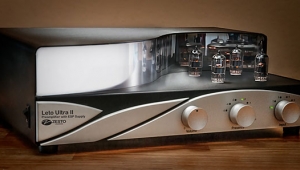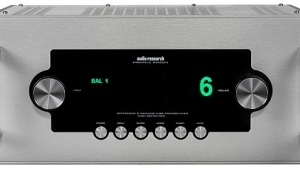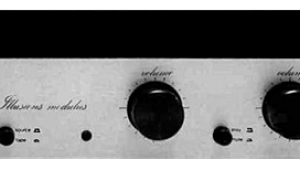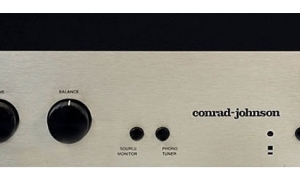| Columns Retired Columns & Blogs |
Herron Audio VTSP-1 preamplifier & VTPH-1MC phono preamplifier Measurements, Herron VTSP-1
Sidebar 3: Measurements, Herron VTSP-1
I didn't notice any turn-on thumps with this nicely made line stage when I measured it. However, I did have to remove, then reinstall the tubes before I could get any low-frequency output from the right channel. Obviously, a tube had worked loose in shipping.
The preamp inverted absolute polarity. Its maximum voltage gain was 14.4dB, while the volume control gave unity gain at its 1:00 setting. The balance control seemed too sensitive in its operation, just a slight offset giving a 1dB difference in levels between channels. Input impedance at 1kHz was high, at 86.2k ohms, while the output impedance varied from a very low 67 ohms at 20kHz and 1kHz to 731 ohms at 20Hz. The Herron should be used with power amps having an input impedance of 20k ohms and above if the lows are not to start sounding a little lean.
The frequency response (fig.1) rolled off a little earlier than I was expecting from the specification, and was down 0.5dB at 20kHz at the volume control's unity gain setting. Setting the control to its maximum increased the rolloff to -1dB at 20kHz, which will be audible as a slight softening. Channel separation (fig.2) was excellent, though about 10dB worse in the L-R direction than in the R-L. The 6dB/octave rise in crosstalk with frequency in this graph is due to the usual capacitive coupling between channels.
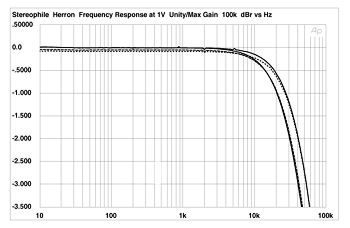
Fig.1 Herron VTSP-1, frequency response at 1V output into 100k ohms with volume control at unity gain (top) and its maximum (bottom). (0.5dB/vertical div.)

Fig.2 Herron VTSP-1, channel separation with volume control at its maximum, from top to bottom: L-R, R-L (10dB/vertical div.).
Fig.3 shows how the Herron's THD+noise percentage changes as the output level increases. Below 600mV, the graphed figure is dominated by noise, though this is very low in level. Above that figure the distortion increases, though in a slow, well-controlled manner. At 2V output---about the maximum that the preamp will ever be asked to deliver into a real-world power amplifier---the distortion was just 0.06%, and the usual 1% THD clipping point was not reached until 28V out, this clip point the same across the audio band.
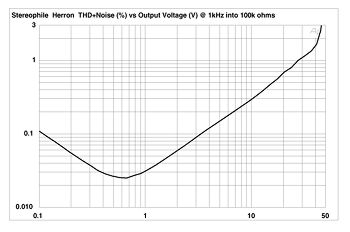
Fig.3 Herron VTSP-1, distortion (%) vs output voltage at 1kHz into 100k ohms.
This is one linear preamp, as can also be seen in fig.4, which shows the spectrum of its output while it drives a 50Hz sinewave at 900mV into 100k ohms. Only the second harmonic can be seen, this at a low -73dB. Replacing the 100k load with a punishing 600 ohms (fig.5) dropped the signal to 660mV and increased the distortion level. The second harmonic is now at -53dB, with the third and fourth harmonics now apparent. But these harmonics decrease in level with frequency, which is subjectively optimal.

Fig.4 Herron VTSP-1, spectrum of 50Hz sinewave, DC-1kHz, at 900mV into 100k ohms (linear frequency scale).

Fig.5 Herron VTSP-1, spectrum of 50Hz sinewave, DC-1kHz, at 660mV into 600 ohms (linear frequency scale).
This is an excellent set of measurements, indicating good engineering and not a hint of tube technology.---John Atkinson
- Log in or register to post comments







